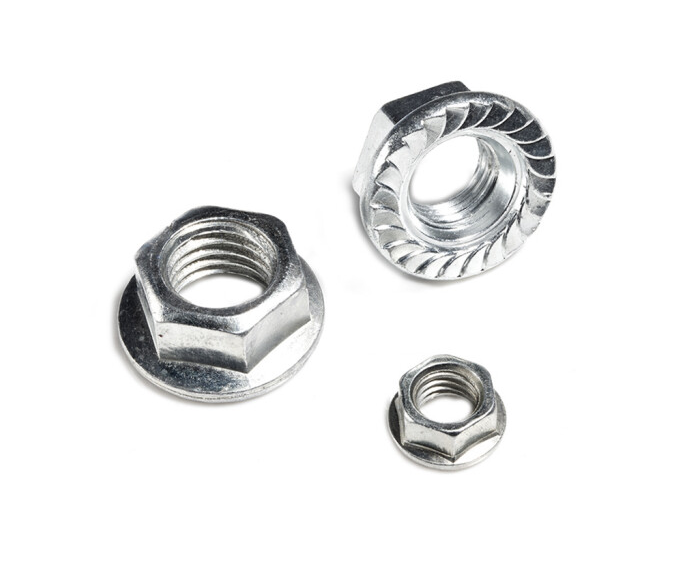
Flange Nuts: Nuts with hexagonal flange faces. The use of flange nuts is very common, and generally many screws and bolts need to be matched with flange nuts.
Flange nut and general hexagon nut are basically the same in size and thread specification, but compared with hexagon nut, it is a one-piece gasket and nut, and there are anti-slip tooth patterns on the bottom, which This increases the surface area contact of the nut with the work-piece. Compared with the combination of ordinary nut and washer, it is firmer and has greater tensile force.
Generally, the specifications of common flange nuts are generally below M20. Because most flange nuts are used on pipes and flanges, they are restricted by the work-piece, and the specifications of flange nuts are less than those of nuts. Some flange nuts above M20 are mostly used for flat flanges, that is, there is no tooth pattern on the flange surface, most of these nuts are used in some special equipment and special places.
Flange nuts are available in iron or stainless steel. But iron is more commonly used. And it can also be electroplated according to the color required by customers. General electroplating treatment has environmental protection and non-environmental protection. Electroplating includes environmentally friendly color zinc, environmentally friendly nickel, environmentally friendly blue zinc, environmentally friendly black zinc, etc., as well as ordinary electroplating, white zinc, color zinc, black zinc, white nickel, etc.
